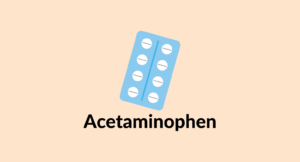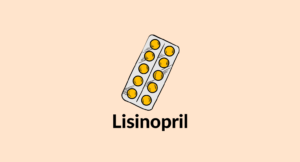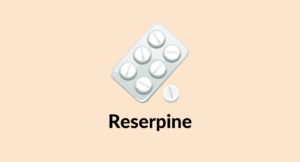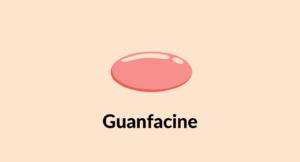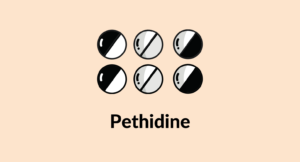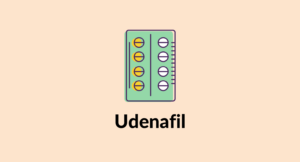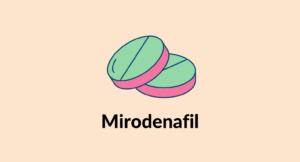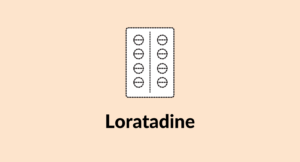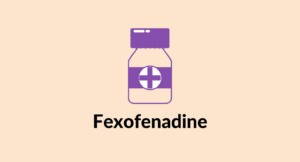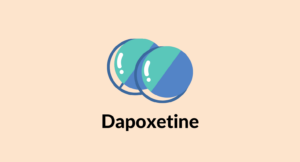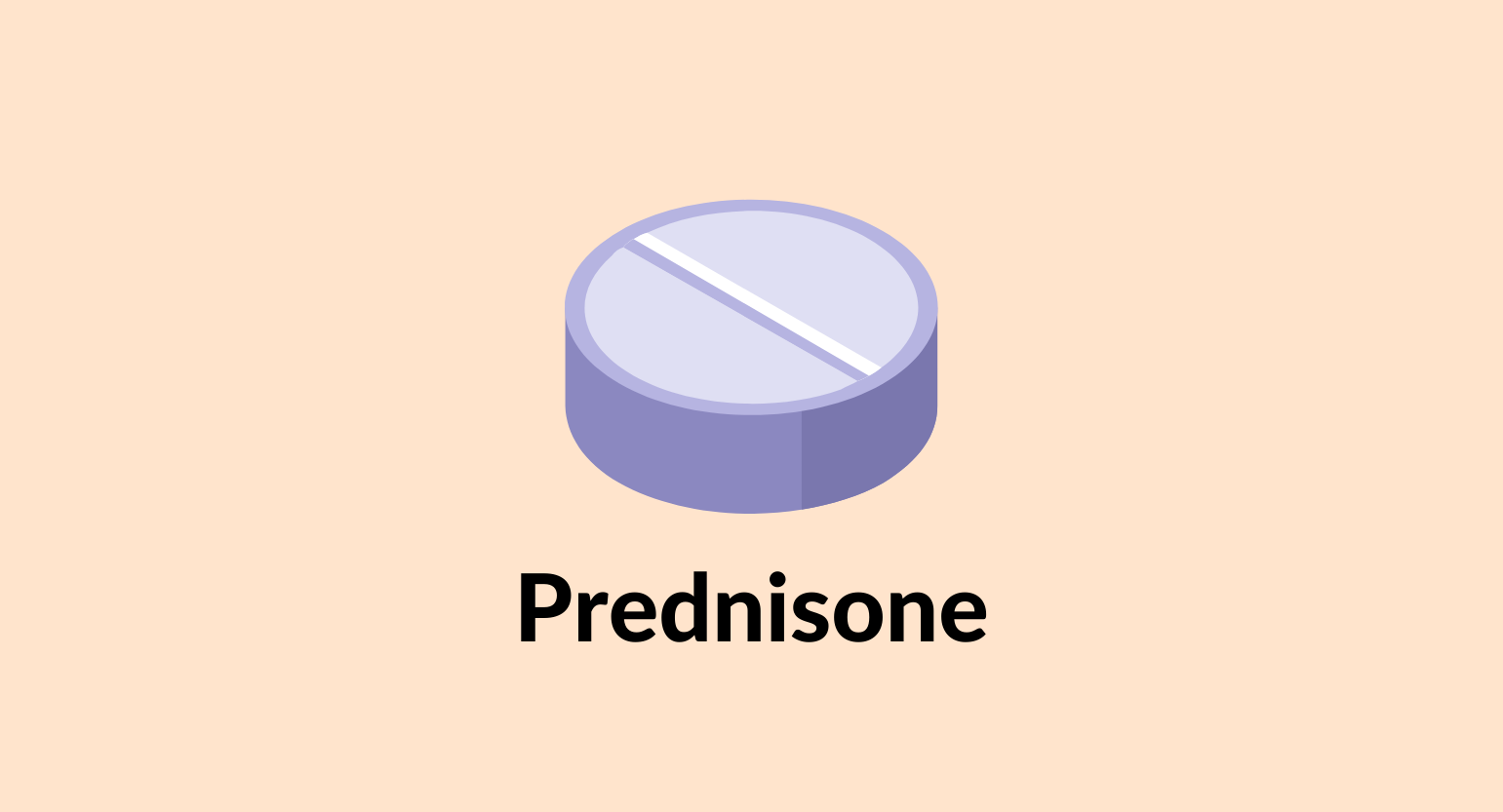
Does CBD Interact With Prednisone (Rayos)?
Information on risks & possible interactions between CBD & prednisone.
Prednisone (Rayos) is a common steroid medication used for inflammation and pain. It’s highly effective but comes with a long list of potential side effects. CBD is sometimes used as an alternative, and many take both of them together.
Is it safe to take CBD and prednisone together? What are the risks?
Learn about the potential interactions between these infamous anti-inflammatory substances.

Does CBD Interact With Prednisone (Rayos)?
Due to the many side effects associated with prednisone, CBD may be a safer alternative.
CBD can inhibit the action of CYP3A4, a liver enzyme that metabolizes several kinds of drugs, including prednisone. Because of its inhibitory activity, it can cause the enzyme to slow down. This could cause the metabolism of prednisone to slow down as well, meaning prednisone would remain in the system for a longer time frame and more liable to cause more side effects.
CBD also interacts with many other kinds of drugs. These are divided into three main categories. They are:
1. Increased Effect (Agonistic Interaction)
This interaction happens when two substances have the same effects in the body due to both of them acting on the same receptors to push in the same direction.
Because CBD and prednisone share many of the same effects, the combination could potentially lead to side effects.
2. Slowed Elimination (Metabolic Competition)
All drugs need to be metabolized by the liver, including CBD.
A metabolic competitor refers to substances that require the same pathway for metabolism. This causes both compounds to compete for metabolism, leading to buildups and a slow breakdown of both compounds.
CBD and prednisone are both metabolized by CYP3A4 and may compete for metabolism, increasing the duration of effects of both substances.
Taking either CBD, prednisone, or both substances daily may lead to gradual buildups in the blood, causing harmful side effects to occur.
Other Names For Prednisone
Prednisone is sold under many different names. All share the same risk and potential interactions.
Other names for prednisone include:
- Rayos
- Sterapred
- Deltasone

Similar Medications: CBD & Immunosuppressants
Prednisone is classified as an immunosuppressant. CBD and immunosuppressants all share similar risks for interaction and side effects.
Here’s a list of similar medications that share an equal level of risk when combined with CBD:
- Azathioprine (Imuran)
- Mycophenolate Mofetil (Cellcept)
- Cyclosporine (Neoral, Sandimmune, Gengraf)
- Methotrexate (Rheumatrex)
- Leflunomide (Arava)
- Cyclophosphamide (Cytoxan)
- Chlorambucil (Leukeran)
- Nitrogen Mustard (Mustargen)
Is It Safe to Take CBD & Prednisone (Rayos) Together?
CBD and prednisone can be taken together safely, but the dose of both substances may need to be modified. Always ask your doctor about taking CBD if you have a prescription for prednisone.
Is CBD a Viable Alternative to Prednisone (Rayos)?
There is not much research about how effective CBD is in treating symptoms of inflammation and other conditions like the ones that prednisone treats, so it cannot be considered an adequate alternative to prednisone.
All available information shows CBD could treat inflammation, but its efficacy and potency are still being evaluated. It is best to consult your doctor first before deciding to switch to CBD.
What Is Prednisone (Rayos)?
Prednisone (Rayos) is a type of glucocorticoid. It was first discovered in 1955 by Schering Corporation under the brand name Meticorten and Delta-Cortef. It got its approval for use by the FDA in 2012.
Prednisone is a synthetic pregnane corticosteroid and a derivative of cortisone.
Prednisone is used in the treatment of asthma, COPD, rheumatologic diseases, neoplasia, etc. It can also treat high blood calcium due to cancer and adrenal insufficiency.
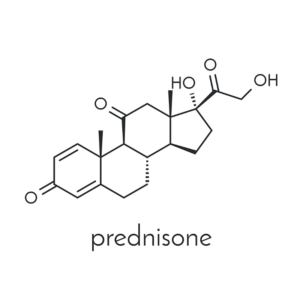
Prednisone Specs:
| Drug Name | Prednisone |
| Trade Name | Deltasone, Liquid Pred, Meticorten, Orasone, Rayos, Prednisone Intensol, Sterapred, Sterapred DS |
| Classification | Corticosteroid |
| CYP Metabolism | Cytochrome P450 |
| Interaction With CBD | Metabolic competitor |
| Risk of Interaction | Moderate |
What Does Prednisone (Rayos) Do?
Prednisone is a synthetic steroid. This drug has anti-inflammatory and immunomodulating properties.
Prednisone is a prodrug that gets hydroxylated to an active metabolite form called Prednisolone. This form controls its glucocorticoid effects. This hydroxylation process may get impaired in liver disease.
Inflammation is the body’s natural response to injury or infection of any kind. The immune system works to contain and eliminate the pathogens that are causing the inflammation. It causes redness, swelling, raised temperature over the affected part, and pain. In chronic conditions such as arthritis, inflammations can cause constant pain and may decrease the functionality of the organs.
Prednisone decreases inflammation by suppressing the migration of the polymorphonuclear leukocytes and reversing the raised capillary permeability that happens in inflammation.
It also stops the multiple inflammatory genes activated in inflammatory diseases and suppresses the immune system by decreasing its activity and volume. It has antineoplastic effects, which it does by stopping glucose transport and inducing the death of immature lymphocytes.
Prednisone gets metabolized by the CYP450 enzymes in the liver, including the CYP3A4 enzyme.
What Are the Side Effects of Prednisone (Rayos)?
Common prednisone side effects include:
- Acne
- Blurred vision
- Changes in behavior or mood
- Elevated blood pressure levels
- Elevated blood sugar levels
- Fluid retention
- Headache
- Nausea
- Restlessness and inability to stay still (akathisia)
- Sleep problems
Serious side effects of prednisone are:
- Hypersensitivity
- Osteoporosis, bone loss, and fractures, osteonecrosis
- Increased risk of infection
- Cardiovascular problems like atherosclerosis, hypertension, etc
- Skin problems like impaired wound healing, striae, urticaria, allergic dermatitis, and others
- Abnormal fat deposits
- Diabetes Mellitus
- Gastric ulcer and GI bleeding
- Corticosteroid induced psychosis
- Glaucoma
- Depression
Contraindications of Prednisone (Rayos)
Prednisone should not be taken in some conditions. They are:
- Untreated serious infections
- Known hypersensitivity to prednisone
- Varicella
- Administration of live or attenuated live vaccine
Some Important Points to Know About Prednisone (Rayos)
There are some points that you should know about before using this medication. These are:
A) Stopping Prednisone
This drug is similar to cortisol, a hormone produced by the adrenal glands that regulate many functions. If prednisone is used for a long time, say a few weeks to months, the adrenal glands will decrease their cortisol production.
If you stop taking this medication abruptly, your body may go into symptoms like prednisone withdrawal, so gradual tapering is needed. Some of the withdrawal symptoms of stopping prednisone consist of fatigue, joint pains, stiffening of muscles, and fever.
B) Prolonged Use of Prednisone
Prolonged use of this drug can cause several unwanted effects in the body. These include an increased risk of infection, osteoporosis, delayed wound healing, elevated intraocular pressure, glaucoma, cataracts, and reactivation of latent tuberculosis.
C) Monitoring the Patients
It is of great importance to monitor patients taking prednisone as it may cause hypothalamic-pituitary-adrenal (HPA) axis suppression, Cushing syndrome, hyperglycemia, and psychiatric disturbances.
D) Use In Various Diseases
Prednisone can be given in low doses for some chronic diseases, including liver diseases, hypertension, thyroid disorders, osteoporosis, kidney diseases, diabetes mellitus, and gastrointestinal disorders. However, caution is necessary. Patients receiving this medication should avoid chickenpox or measles-infected persons if unvaccinated.
E) Use In Pregnancy & Lactating Mothers
Prednisone can be dangerous in pregnancy as it can cause harm to the fetus. It also increases the risk of cleft palate. It is expressed in the milk in lactating mothers and may cause problems in the baby, so the lowest dose must be used.
Because of the many adverse effects of prednisone, more users are searching for natural alternatives like CBD to treat inflammations.
What Is CBD (Cannabidiol)?
Cannabidiol or CBD is the second most common compound extracted from the Cannabis sativa plant. It’s usually inhaled or taken orally. It does not cause intoxication and isn’t psychoactive, unlike some other cannabinoids.
Cannabidiol has been undergoing research for its role in treating inflammation, anxiety, cognition, movement disorders, and pain [1, 2]. Epidiolex, a drug containing cannabidiol, has been approved by the FDA for treating two epilepsy conditions.
Also, a 1:1 combination of CBD and tetrahydrocannabinol (THC), another cannabis extract, can treat spasticity in multiple sclerosis.
How Does CBD Work?
CBD can interact with the endocannabinoid system (ECS), a biological system containing endocannabinoids, a type of neurotransmitters. These endocannabinoids bind to the cannabinoid receptor proteins. The ECS is vital for conducting neural functions and balances cognitive processes, pain sensation, and mood.
There are two primary cannabinoid receptors, CB1 and CB2. CB1 receptors are present mainly in the brain and central nervous tissues.
CB2 receptors can be found in peripheral organs, especially the immune system. THC, cannabis’ main component, binds to CB1 directly and mediates its psychoactive properties.
However, CBD alters the action of the receptors that bind to the cannabinoids. CBD can interact with CB2 receptors, induce vasodilation, turn off the inflammatory reaction, and activate 5HT1A receptors that provide therapeutic relief in diabetic neuropathy. It also helps decrease oxidative stress and inflammation [3].
CBD is metabolized in the liver by cytochrome P450 enzymes such as CYP1A1, CYP1A2, CYP1A22, CYP1B1, CYP2B6, CYP2C19, CYP2D6, CYP3A4, and CYP3A5.
CBD is also a competitive inhibitor for these same enzymes. It can occupy sites of enzymatic activity and can displace its chemical competitors. Due to this, the enzymes of cytochrome P450 will be unable to metabolize other compounds.
Side Effects of CBD
There are some side effects of CBD that one should know. They are:
- Mouth dryness
- Decreased appetite
- Drowsiness
- Fatigue
- Allergy

Key Takeaways: Is It Safe to Take Prednisone (Rayos) With CBD?
CBD is well-tolerated in the general population and has shown effectiveness in treating inflammations just as prednisone (Rayos) can. However, both these drugs can interact with each other and worsen each other’s effects. Consult your doctor first before using CBD.
Also, if you plan on using CBD, you need to taper prednisone gradually. Only when it is certain that the two drugs will not interact with each other can you start with CBD.
There’s ongoing research on CBD’s therapeutic effects, so perhaps we’ll find out more about its uses and interactions with time.
References Used
- Atalay, S., Jarocka-Karpowicz, I., & Skrzydlewska, E. (2020). Antioxidative and anti-inflammatory properties of cannabidiol. Antioxidants, 9(1), 21.
- Crippa, J. A. S., Derenusson, G. N., Ferrari, T. B., Wichert-Ana, L., Duran, F. L., Martin-Santos, R., … & Hallak, J. E. C. (2011). Neural basis of anxiolytic effects of cannabidiol (CBD) in generalized social anxiety disorder: a preliminary report. Journal of psychopharmacology, 25(1), 121-130.
- Nichols, J. M., & Kaplan, B. L. (2020). Immune responses regulated by cannabidiol. Cannabis and cannabinoid research, 5(1), 12-31.
Signup to our newsletter
Be the first to know about our newest arrivals and special offers!
